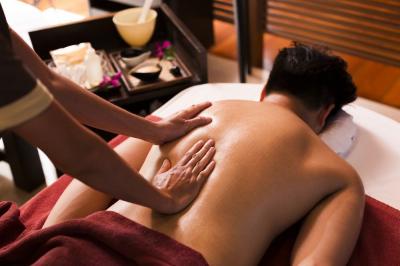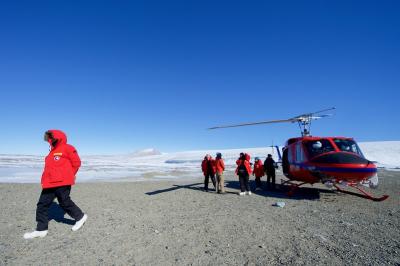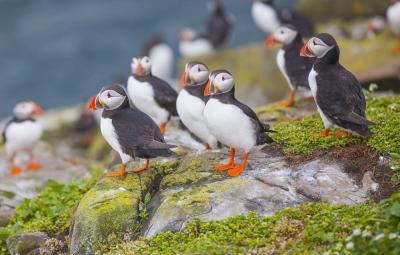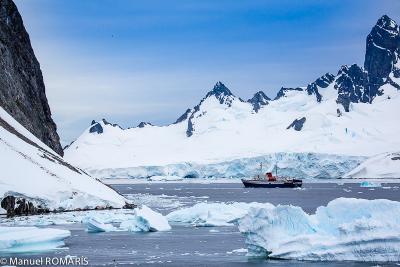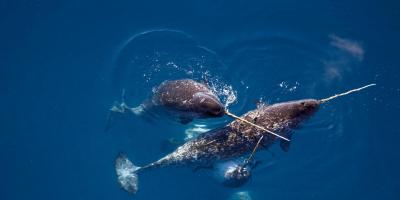Welcome to Argentina
Outdoor enthusiasts are guaranteed to find Argentina extremely exciting with a multitude of sports and activities on offer. They can be ranged from world-renowned fly-fishing to horseriding, ice climbing, rock-climbing, skiing, trekking and whitewater rafting. It’s even possible to do expeditions to the Southern Patagonian Ice Cap if you think you have enough stamina and endurance for such an experience.
Nature Tourism
With a diverse range of both provincial and national parks, Argentina provides a variety of opportunities for tourists interested in nature tourism to experience the ecosystems that cover the country. We can distinguish Península Valdés as the great location for viewing the Patagonian steppe’s fauna and wildlife, Esteros de Iberá’s muggy swamps and Iguazú’s subtropical jungles.
Known as guardaparques, the rangers in the country’s national parks are among the best in South America. Their professionalism is evident in their dedication to their job, which requires isolation and can be extremely demanding. As a result, their training is exceptional with solid foundations in the region’s wildlife that, in their generally friendly manner, they’re usually quite happy to share with tourists. While some of these rangers are genuine naturalists, the majority of them have more interaction with the public than they do with the local wildlife.
Bird enthusiasts will be spoiled for choice with the biodiversity that is present in the country. Argentina is host to approximately 10% of the global bird species.
Trekking
Argentina offers a wealth of trekking opportunities that are not only spectacular, but also truly isolated and allow you to be alone with the nature. It’s possible to walk for days without seeing another person, but be sure to request information and to make use of a map as the quality of the trails varies significantly with many difficult paths to follow. Contact Club Andino in Bariloche for top-notch advice and for receiving the maps of the treks. The best treks can be found in national parks (particularly in Patagonia) but there are many equally incredible treks that are hidden in the regions nearby the parks.
The area surrounding El Chaltén has rapidly increased in popularity in the last decade due to the fierce granite spires found in Fitz Roy. It is now as famous with tourists as Torres del Paine in Chile. South of Bariloche, the mountainous region of Parque Nacional Nahuel Huapi is another main destination for treks because the trails are well-marked and connected with a solid and reliable infrastructure and secure mountain refuges. To the north, Jujuy Province – particularly the area of Calilegua – also offers incredible opportunities for trekking with diverse scenery that covers all views from bare mountains to subtropical regions.
It’s possible to camp in a number of national parks. There are three categories of grading for campsites: camping libre, camping agreste and camping organizado. The first offers little or no services beyond ablution blocks at some sites while the second option usually offers basic amenities and ablutions as well as a small convenience store. The third category is organized camping in which a variety of services are provided including a restaurant of some sort and electricity.
Regardless of the length of your trip, thorough preparation is always essential - even if it’s just a half-day hike. Night temperature is much lower than the warmer day temperature so be sure to pack clothing that is windproof as well as waterproof and of a good quality. It’s also a good idea to keep your spare clothes and socks inside a sealed plastic bag within your backpack. You may also prefer to pack a balaclava for extra warmth rather than a simple woollen hat. Strong sunblock and lip balm are as essential as appropriate headgear and sunglasses. Make sure that your boots provide enough support for your ankles and are well-soled. Be advised that Gore-Text boots have limited waterproofing and will not suffice when crossing swamplands. Similarly, you will need a tent that is fully waterproof and can sustain strong winds particularly if you’re heading to Patagonia. A three-season sleeping bag is also a necessity and you will need to use it with a foam mattress that is either solid or semi-inflatable to maintain your body heat at night.
Many parks require you to pack a light cooking stove. If you’re travelling to open areas, pack a high-pressure petrol stove like the MSR rather than one that runs on butane cylinders like the Camping Gaz. However, you need to filter the petrol before using it in order to prevent the stove from becoming clogged by the debris in the fuel. Other useful tools to pack include a telescopic hiking pole to help you balance while trekking and a headlamp with gaffer tape, which doubles as an all-purpose tool in an emergency. A first aid kit and compass are essential and it’s well known how to use them. It’s important to stay hydrated while trekking so make sure to have at least two litres of water with you at all times. It’s perfect to buy a pump-action water filter to remove the need to boil water before consuming it.
Climbing
The Andes mountain range provides fantastic diversity for climbers. While it’s not essential to be an expert, it is necessary to be thoroughly prepared. Although the climbing season is quite short (mostly December to February), it’s possible to schedule climbs with short notice. Try to bring your own high-quality equipment with you. The Aconcagua (9,962m) is not only the highest peak on the continent; it’s also the most famous challenge even if it may not be the most technically challenging. The high altitude and frequent storms are responsible for many deaths each year, so thorough preparation is essential. Access the peak from Mendoza City.
Slightly south of the Andes is the 6,750m Tupungato while Mercedario, at 6,770m, lies to the north. On the border between La Rioja and Catamarca provinces, you’ll find Cerro Bonete (6872m) and Pissis (6793m) while climbers interested in climbing active volcanoes will find the world’s highest one, Ojos del Salado (6,885m), in the north of Catamarca. Most people approach Ojos from the Chilean side while the others are generally approached from Fiambalá.
True volcano enthusiasts, however, head to the 3,776m cone-shaped Lanín. The northeast route is fairly straightforward and the climb is usually done within two days. The Cerro Catedral massif and Cerro Tronador (3554m) are on offer in the Parque Nacional Nahuel Huapi while South Patagonia also offers much better options for climbing. Another option is San Lorenzo, which stands at 3,706m and is usually approached from the Rio Oro Valley in Argentina. For truly magnificent and unequaled views, head to the granite spires of the Fitz Roy massif and Cerro Torre.
Regardless of which climb you choose to do, remember the importance of acclimatizing thoroughly – especially if the climb is over 4,000m – and make sure that you know how dangerous altitude sickness can be.
Fishing
Argentina has no competition when looking for places to do fly-fishing and Patagonia is full of professionals that visit it annually. The main fish in the sport is trout. However, both landlocked and Pacific salmon can also be fished in the region. The largest sea-running brown trout are most to be found in the Rio Grande and eastern and central Tierra del Fuego’s rivers as well as the mainland’s Rio Gallegos. However, you’ll find incredible exmples of steelhead trout in Rio Santa Cruz near comandate Luis Piedra Buena while brook trout is the speciality of Rio. For outstanding angling opportunities combined with breathtaking scenery, the Patagonian Lake District is well-known – head to Junín de los Andes, San Martín de los Andes, Bariloche and Esquel.
Mid-November until Easter is the season for trout fishing and permits are valid across the country although there are slight annual changes to the regulations. National Park Offices, some guardaparque posts, tourist offices and fishing shops all sell permits and they’re not in short supply – particularly if you’re heading to the Patagonian Lake District in the north. Permits are accompanied by a booklet that provides details regarding the type of fish that is permitted to be caught in the lakes and regions. Also you have to know the rules for fish to be caught and released and what you may catch to eat. You do not have to cross private property, although the law in Argentina does not prohibit waters for fishing.
Skiing
Ski resorts in Argentina cannot be compared to their European or North American counterparts. Most visitors are locals or tourists from Brazil or Chile, but there are a handful of non-Latin American tourists who want to ski during the summer season in the north. Renting gear is easy and the infrastructure is constantly being improved. Some resorts start their seasons in late May and run to early October, but the season is mostly July and August. Like many places, snow conditions can be changed each year, but it’s usually excellent.
Las Leñas is the top resort in the country for downhill skiing and it’s where you’ll find challenging skiing. Other good choices are Chapelco (near San Martin de los Andes), which also offers a variety of options for cross-country skiing, and the long-running Bariloche resorts of Cerro Catedral and Cerro Otto, which are worth visiting – despite the crowds – for their incredible panoramic views of the Nahuel Huapi region. Slowly stepping up the list of resorts, Ushuaia is also expanding its otherwise limited facilities for downhill skiing, but makes up for it with its cross-country skiing options. It’s also surrounded by scenic views. However, if you’re looking for après-ski, you’d be best off heading to Bariloche and Las Leñas.
Rafting
Chile may offer more extreme options for rafting, but Argentina has many scenic options of Grade II to V rivers. Day-trips are common and usually done on the calm Río Aluminé surrounded by views of monkey-puzzle-trees, the rougher and silty Río Mendoza, the Río Juramento’s vast canyons, through alp-linke landscapes south of the Parque Nacional Nahuel Huapi on the Rio Manso and the Rio Corcovado south of Esquel, which is less popular with visitors. True enthusiasts should base themselves in Esquel, which is an excellent location for rafting trips on the world-renowned Río Futaleufú, which offers Grade V rapids through rainforests. No prior experience is needed in order to go on the rafting trip, but it is essential to know how to swim, to have proper-fitting safety gear and to follow the instructions of the tour guides.

